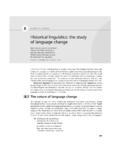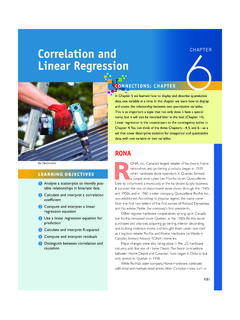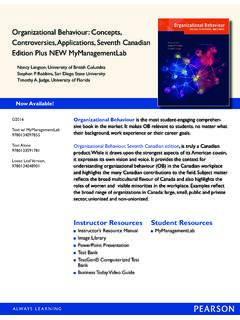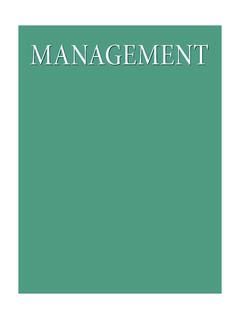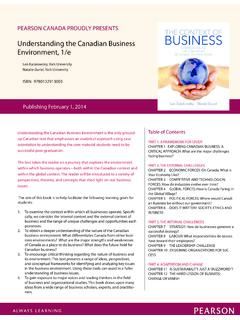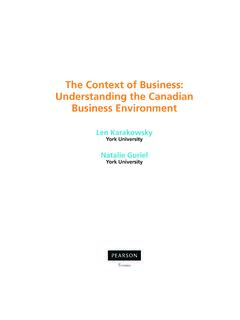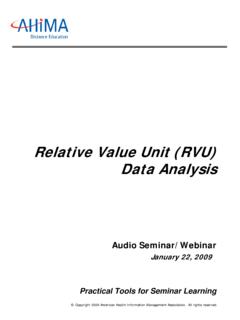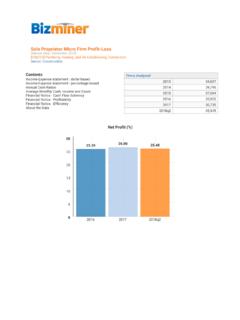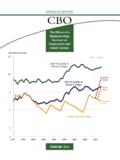Transcription of Cost–Volume–Profit Analysis - Pearson
1 How The Biggest Rock Show Ever Turned a Big Profit 1 On its recent tour across North America, Europe, and Asia, the rock band U2 performed on an imposing 164-foot-high stage that resembled a spaceship, complete with a massive video screen and footbridges leading to ringed catwalks. U2 used three separate stages each one costing nearly $40 million. Additional expenses for the tour were $750,000 daily. As a result, the tour s suc-cess depended not only on the quality of each night s concert but also on recouping its tremendous fixed costs costs that did not change with the number of fans in the audience.
2 To cover its high fixed costs and make a profit, U2 needed to sell a lot of tickets. To maximize the tour s revenue, tickets were sold for as little as $30, and a unique in-the-round stage configuration boosted stadium capacities by roughly 20%. The plan worked. U2 shattered attendance records in most of the venues it played. By the end of the tour, the band played to more than 7 million fans, racking up almost $736 million in ticket and merchandise sales .. and went into the history books as the biggest tour ever.
3 As you read this chapter, you will begin to understand how and why U2 made the decision to lower prices. Businesses that have high fixed costs have to pay particular attention to the what-ifs behind decisions because making the wrong choices can be disastrous. Examples of well-known companies that have high fixed costs are American Airlines and General Motors. When companies have high fixed costs, they need significant revenues just to break even. In the airline industry, for example, companies fixed costs are so high that the profits most airlines make come from the last two to five passengers who board each flight!
4 Consequently, when revenues at American Airlines dropped, it was forced to declare bankruptcy. In this chapter, you will see how cost volume profit (CVP) Analysis helps managers minimize such risks. Cost Volume Profit Analysis Learning Objectives 1. Identify the essential elements of cost volume profit Analysis and calculate the breakeven point (BEP). 2. Apply the CVP model to calculate a target operating profit before interest and tax. 3. Distinguish among contribution, gross, operating, and net income margins, and apply the CVP model to calculate target net income.
5 4. Apply the CVP model in decision making and explain how sensitivity Analysis can help managers both identify and manage risk. 5. Analyze the implications of uncertainty on decision models. 6. Interpret the results of CVP Analysis in complex strategic, multi-product, and multiple cost driver situations. 1 Sources: Edna Gundersen. 2009. U2 turns 360 stadium into attendance-shattering sellouts. USA Today , October 4; Ray Waddell. 2011. U2 s 360 tour gross: $736,137,344!
6 Billboard , July 29. 57 3 Kevin Dietsch/ 579/18/14 12:33 PM9/18/14 12:33 PM58 CHAPTER 3 COST VOLUME PROFIT Analysis Cost volume profit (CVP) Analysis is a model to analyze the behaviour of net income in response to changes in total revenue, total costs, or both. In reality, businesses oper-ate in a complex environment; a model reduces that complexity by using simplifying assumptions to focus on only the relevant relationships. The most important elements in a model affect one another in a predictable way.
7 In this chapter, when we determine the breakeven point (BEP), we include all business function costs in the value chain, not just those of production. The breakeven point (BEP) is the point at which total revenue minus total business function costs is $0. Essentials of CVP Analysis The CVP model depends on understanding the effects of cost behaviour on profit, and identifies only the relevant relationships. The following assumptions identify relevant information required to complete a CVP Analysis : Changes in the sales volume and production (or purchase) volume are identical (pur-chase volume would apply to a merchandiser).
8 The ending balances in all inventories are zero. Everything purchased is used in production; everything produced is sold. For a merchandiser, the sales volume of finished goods purchased for resale is identical to the sales volume sold. All costs are classified as either fixed (FC) or variable (VC). All mixed costs are broken into their respective fixed and variable components. The fixed costs include both manufacturing and non-manufacturing fixed costs. The total variable costs include both manufacturing and non-manufacturing variable costs.
9 All cost behaviour is linear (a straight line) within the relevant volume range. The sales price per unit, variable costs per unit, and total fixed costs and sales (or production) volume are known. The MIS provides all of this information. Either the product sold or the product mix remains constant, although the volume changes. All revenue and costs can be calculated and compared without considering the time-value of money. We know that total revenue is the product of total sales volume or quantity (Q) of units sold multiplied by the price per unit.
10 We also know that total variable cost is the product of total Q units produced multiplied by the cost per unit, and together with fixed costs (constant cost regardless of production volume) comprise total costs. Based on the simplifying assumption that Q sold = Q produced, the relationship among relevant ele-ments of the CVP model upon which the BEP can be calculated is: Operating income=(Unit sales price*Q)-(Unit variable cost*Q)-(Fixed costs) (1) At break even, operating income is zero. So for the break even point, we can rearrange equation (1) above to be: (Unit sales price*Q)=(Unit variable cost*Q)+(Fixed costs) CVP Analysis : An Example Decision Framework We will begin by looking at an example based on known information about operating income (net income before interest and taxes).
